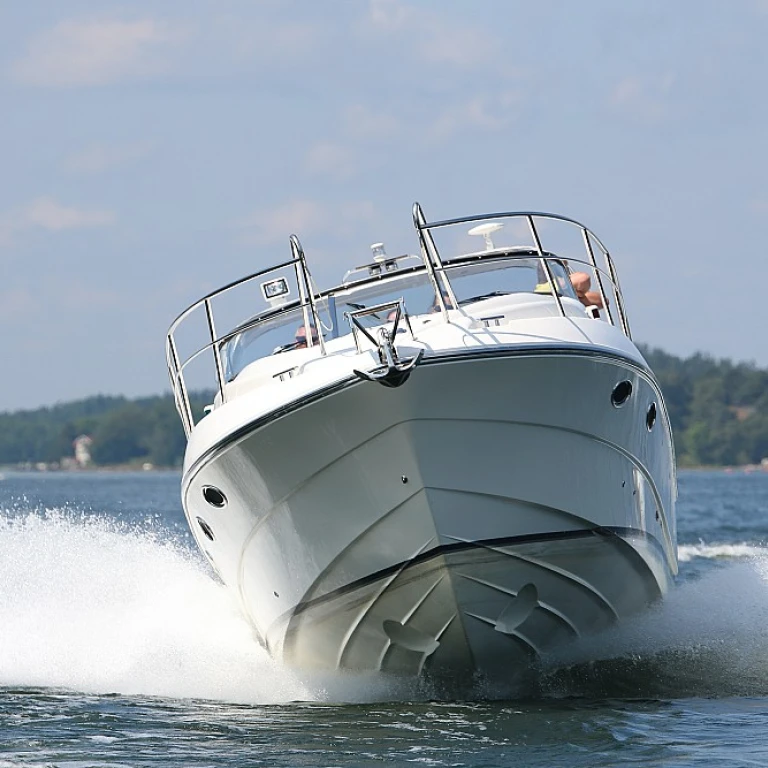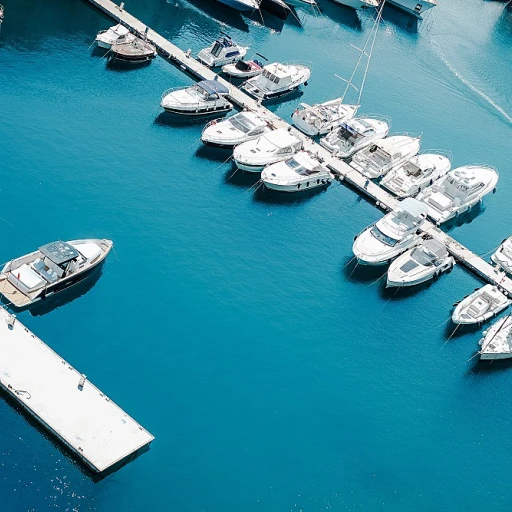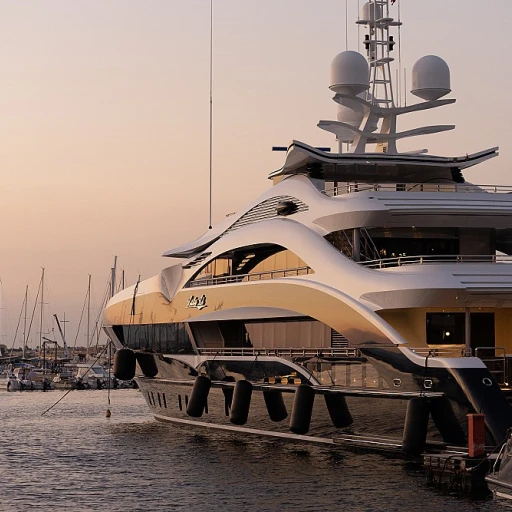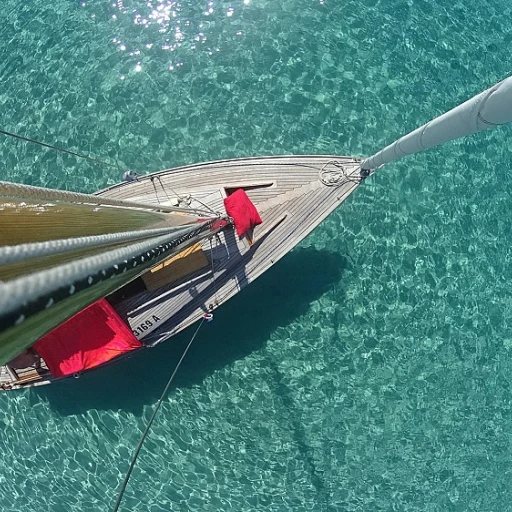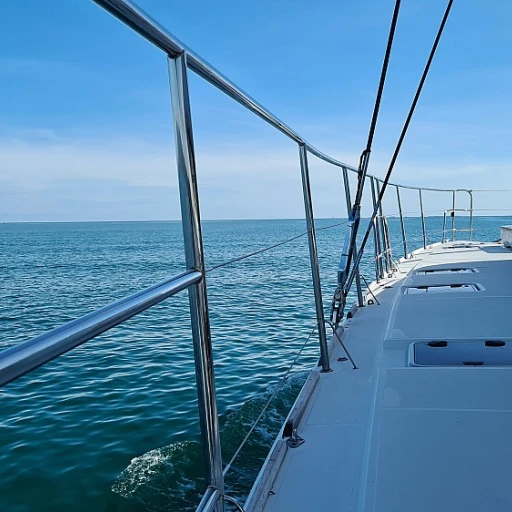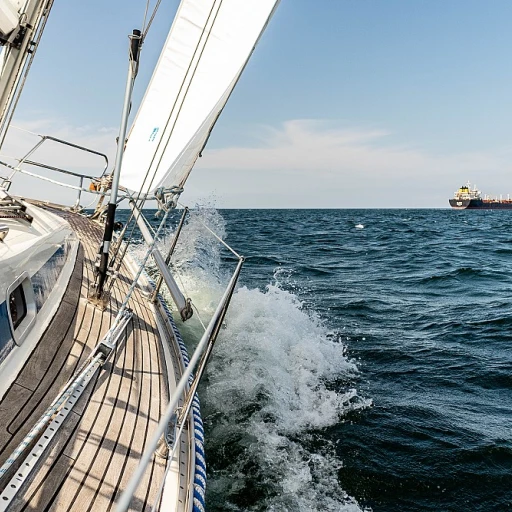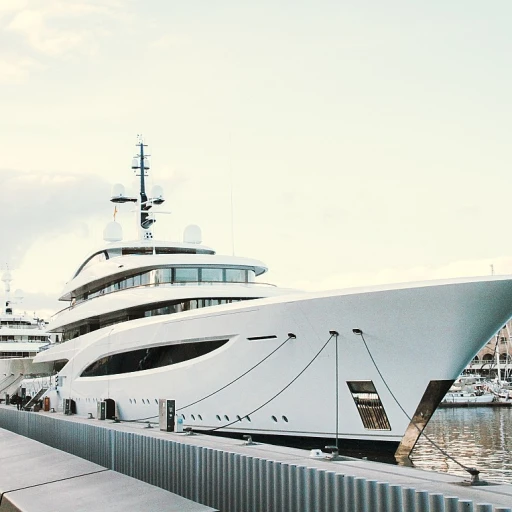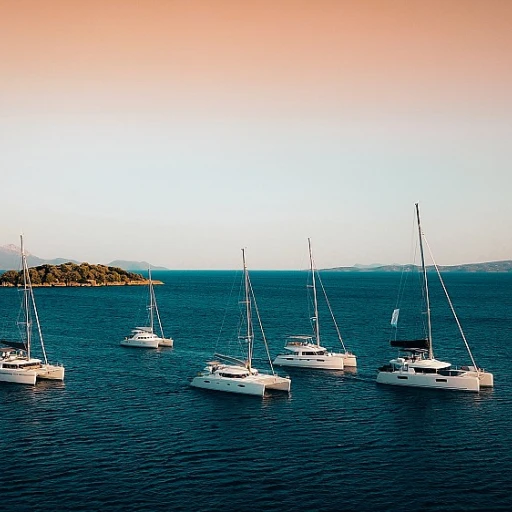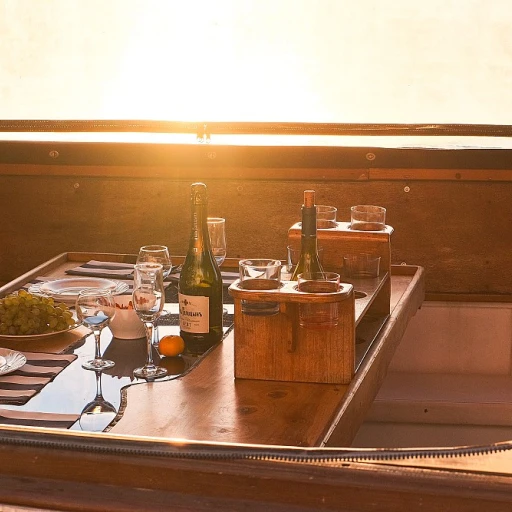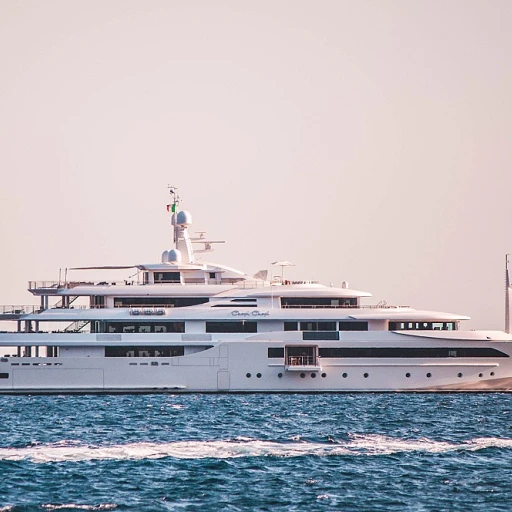
The vision behind Bill Gates' yacht Aqua
Bill Gates' ambitious vision for Aqua
Imagine a yacht unlike any other. When Bill Gates, the co-founder of Microsoft, envisioned Aqua, he wasn't just thinking of luxurious living on the water. He aimed to create a maritime masterpiece that showcases pioneering technology and sustainability. Gates, known for his forward-thinking approach, wanted Aqua to be a beacon for what is possible in the yachting industry—a symbol of a cleaner, greener future.
The inspiration behind the yacht Aqua
The inspiration for Aqua wasn't drawn from traditional sources. Instead, Gates looked towards the future. His interest in sustainability and clean energy solutions played a crucial role. He envisioned a vessel that not only offered the ultimate luxury experience but also minimized environmental harm. Aqua is powered by hydrogen fuel cells which means zero emissions. According to Gates, this was a fundamental requirement, setting a benchmark for future yacht designs.
Environmental advances in the yacht industry
The importance of sustainability in yacht design cannot be overstated. Aqua represents a major leap forward in this respect. Utilising hydrogen fuel cells allows Aqua to cover significant ranges without releasing harmful emissions into the atmosphere. This method effectively reduces the carbon footprint of the vessel, making it a pioneer in the realm of eco-friendly yachts. The integrated technology used in Aqua has also been a case study in several environmental impact reports concerning maritime transport, highlighting its breakthrough in reducing marine pollution.
For more insights on how the yachting industry is embracing sustainable technologies, have a look at sustainable sailing: how are eco-friendly yachts revolutionizing the seas
Community response and Gates' commitment
Bill Gates’ commitment to innovation and sustainability did not go unnoticed. The yacht Aqua has been lauded in the community as a pioneering step towards more responsible luxury. Despite some controversies and skeptics questioning the feasibility and cost-effectiveness of hydrogen-powered yachts, experts like Jan Bart Verkuyl from Feadship, a shipyard involved in Aqua’s development, praise Bill Gates for pushing the industry boundaries. “It’s a brave and much-needed move,” Verkuyl stated, emphasizing the significance of such high-profile endorsements in driving change.
The role of Sinot yacht architecture in Aqua's design
Designed with a vision: the role of Sinot yacht architecture in Aqua’s aesthetics
When Bill Gates set out to commission the Aqua, he turned to the innovative minds at Sinot Yacht Architecture & Design. Under the expert guidance of Sander Sinot, the company has made a name for itself in the world of superyachts. Sinot's goal wasn’t merely to create another luxurious water vessel but to reimagine the very idea of what a yacht could be in terms of design, technology, and sustainability.
The Aqua’s cutting-edge design reflects a commitment to blending luxury with environmental responsibility. The use of hydrogen fuel cells was a significant departure from traditional superyacht designs, positioning the Aqua as a trailblazer in sustainable sailing. This focus on sustainability is one of the defining features of Sinot’s work, making Aqua a true icon of modern yacht architecture.
Blurring the lines between indoor and outdoor spaces
Sinot’s design philosophy shines in Aqua’s seamless integration of indoor and outdoor spaces. The yacht's decks offer panoramic views and extensive open areas, blurring the lines between its interior luxury and the open sea. Key design elements like the infinity pool, outdoor lounges, and extensive aft deck space were conceived to maximize the enjoyment of the natural environment while maintaining comfort and privacy.
Inside, the Aqua is nothing short of extraordinary. The yacht features a groundbreaking layout that includes a private dining room, large salons, and state-of-the-art amenities such as touch-controlled air conditioning and heating systems. Sinot’s meticulous attention to detail is evident in every corner, from the grand staircase to the thoughtful placement of custom furnishings.
Collaboration with Feadship: crafting a masterpiece
The build was entrusted to Feadship’s renowned Royal Van Lent yard, who collaborated closely with Sinot to bring this groundbreaking design to life. Experts like Jan-Bart Verkuyl from Feadship have noted that the Aqua represents a new benchmark in yacht construction. Verkuyl emphasized that partnering with Sinot allowed for an unprecedented level of innovation, particularly in integrating hydrogen fuel cells.
The Aqua is more than just a technological marvel; it’s a feat of engineering that challenges conventional yacht-building norms. Feadship’s commitment to quality and precision ensured that every element was executed to the highest standards, resulting in a yacht that is as stunning as it is pioneering.
A symbol of futuristic, sustainable luxury
The Aqua is a testament to what the future of yachting could look like. Sinot and Feadship successfully created a superyacht that doesn’t compromise on luxury while leading the charge in environmental sustainability. With the Aqua, they have set a new standard for the industry that others are sure to follow.
Hydrogen fuel cells: powering the future of yachting
Hydrogen fuel cells at the heart of the Aqua
Hydrogen fuel cells are not just a futuristic concept; they are the driving force behind the Aqua. Bill Gates' yacht leverages cutting-edge hydrogen technology to set a new standard in the yachting world. The primary source of Aqua's power, hydrogen, converts chemical energy into electrical energy without burning fuel. Simply put, hydrogen and oxygen combine in the fuel cells to produce electricity, with the only byproduct being water—a significant environmental benefit.What experts say about hydrogen-powered yachts
According to Jan Bart Verkuyl, CEO of Feadship's Royal Van Lent shipyard, this transition to hydrogen fuel cells marks a revolutionary shift in yacht design and engineering. He says, “Hydrogen is the fuel of the future for our industry. It offers a way to significantly reduce environmental impact while maintaining the luxury and performance that our clients expect.” Similarly, MTU didn’t miss the opportunity to endorse this path. The German engine manufacturer supports hydrogen as a more sustainable alternative to traditional diesel engines, paving the way for a cleaner yachting experience.Hydrogen fuel's journey from concept to reality
The roots of hydrogen fuel cells trace back to 1839 when Welsh scientist Sir William Robert Grove first conceptualized the device. Fast forward to the present, and this technology has matured to the point where it's being used to power vehicles, buildings, and now luxury yachts. Gates' investment in this technology showcases its growing significance in various sectors, including maritime.The Aqua’s power and speed
Powered by two 1 MW fuel cell systems, the Aqua boasts an impressive range of 3,750 nautical miles at a cruising speed of 10-12 knots. In comparison to traditional mega yachts, the Aqua achieves this impressive range with zero emissions, proving hydrogen as not only a viable but superior alternative.Common controversies around hydrogen fuel cells
It’s worth noting that hydrogen technology hasn’t been without its skeptics. Concerns about hydrogen production, storage, and refueling infrastructure have been raised. Producing hydrogen through electrolysis is energy-intensive, and the infrastructure for refueling yachts with liquefied hydrogen is still in its infancy. Despite these challenges, Gates’ investment signals a strong belief in hydrogen's potential to overcome these hurdles. Hydrogen fuel cells represent a groundbreaking step towards sustainable luxury yachting, and the Aqua stands as a testament to the feasibility and benefits of this technology. For those interested in the intricacies of such innovative maritime designs, you might enjoy reading about the Maltese Falcon.Environmental impact: Aqua's green credentials
Fuel cells: revolutionizing yacht energy
One of the most striking attributes of Bill Gates' yacht, Aqua, is its utilization of hydrogen fuel cells. This marks an impressive leap toward more sustainable yachting practices. Hydrogen fuel cells function by combining hydrogen with oxygen to generate electricity, leaving water and heat as byproducts. This clean energy source allows Aqua to significantly reduce its carbon footprint.
The vessel is powered by a series of fuel cells totaling 1.5 megawatts, which ensures it can run efficiently and effectively. According to Sander Sinot, the visionary behind the design, "The Aqua yacht was conceived with a strong focus on future possibilities."
Bill Gates’ superyacht isn't simply about luxury; it's a statement on environmental responsibility. Aqua's design aims to minimize environmental impact, featuring liquid hydrogen stored at -253°C in vacuum-sealed tanks. These tanks feed the fuel cells, resulting in a propulsion system that spews out nothing but water. (The Guardian, 2020)
The use of hydrogen power in marine vessels isn't without its challenges. For instance, maintaining hydrogen at such low temperatures requires advanced technology and constant vigilance. However, the environmental benefits provide a powerful incentive to overcome these hurdles.
Moreover, the operational range of Aqua is impressive. The yacht can travel up to 3,750 nautical miles without refueling, making transatlantic voyages not only possible but eco-friendly. To put this in perspective, a traditional diesel-powered yacht of similar size would release over 1,000 tons of CO2 on a comparable journey. (Bloomberg, 2020)
Sinot’s visionary green design
Designer Sander Sinot deserves a mention for his groundbreaking work on Aqua’s architecture. His vision was clear—to marry luxury with sustainability. The approach taken by Sinot Yacht Architecture ensures that Aqua stands as a beacon of environmental stewardship in the maritime world.
For instance, the yacht features an advanced waste management system and efficient water recovery processes, ensuring that waste is minimized and water is recycled effectively. These components are part of an integrated approach to create an eco-friendly living space without compromising on luxury. (SuperYacht Times, 2020)
It’s also worth noting that Aqua's innovative green architecture hasn’t gone unnoticed. The yacht has been the subject of numerous accolades and discussions within the yachting community. Royal Van Lent, known for their exquisite craftsmanship, ensures that every aspect of Aqua’s construction adheres to the highest standards of both luxury and sustainability. (Royal Van Lent, 2020)
Breaking barriers: Aqua vs traditional superyachts
When comparing Aqua with other mega yachts, it's clear that Bill Gates’ vessel stands in a league of its own. Traditional luxury yachts are often criticized for their substantial carbon emissions and environmental impact. On the contrary, Aqua showcases how the yacht industry can lead the way in adopting sustainable practices.
The integration of hydrogen fuel cells and luxurious, eco-friendly design sets Aqua apart as a flagship model for future super yachts. It's a powerful example of what is possible when innovation meets environmental consciousness.
Inside Aqua: luxury and innovation combined
A peek into Aqua’s luxurious interior
The inside of Bill Gates' yacht Aqua doesn't just boast cutting-edge technology; it’s also a symphony of luxury and comfort. When you step onboard, one of the first things you’ll notice is the expansive lounge area. It’s designed with comfortable seating and high-end finishes that make it as elegant as any high-rise penthouse.
The Sinot Yacht Architecture team has ensured that every room on board Aqua is a blend of style and functionality, reflecting Gates’ vision for the vessel. The yacht features a VIP suite, several guest cabins, and a master suite that’s beyond comparison. The master suite even includes a private terrace with a panoramic view of the ocean, creating a serene enclave for Gates to retreat.
Indoor and outdoor recreation areas
If you think the indoors was luxurious, wait until you see the deck areas. Aqua’s multi-level decks are perfect for both relaxation and socializing. There's a large pool with an adjoining lounge area, designed to make you feel like you're floating in a luxurious resort.
The yacht doesn’t skimp on recreational facilities either. Aqua features a fully equipped gym, a spa room that offers treatments to rival the best hotels, and even a private cinema. The cinema room is kitted with the latest audio-visual technology to provide a theater-like experience on water.
Dining and culinary experiences
Dining onboard Aqua is an experience in itself. The yacht boasts a well-appointed dining room that can easily host a gourmet feast, thanks to its state-of-the-art kitchen. The kitchen is equipped with the latest appliances to prep anything from a midnight snack to a five-course meal. There’s also an outdoor dining area on the deck, perfect for alfresco dining with the ocean breeze as your backdrop.
Technological innovations and details
The innovative design isn’t limited to aesthetics alone. Aqua features advanced air conditioning and heating systems that ensure a comfortable environment whether you're cruising the Mediterranean or the Caribbean. Moreover, the yacht’s navigation and speed systems are top-notch, promising smooth and efficient voyages.
Aqua is also geared for tech aficionados. The vessel is fitted with the latest smart technology, allowing Gates and his guests to control lighting, climate, and entertainment systems with a touch of a button. This modern approach to yacht living ensures that while the yacht itself is a marvel of luxury, operating and enjoying its features is remarkably straightforward.
Technical specifications: Aqua's impressive features
Hydrogen fuel cells and Aqua's technical prowess
With the yacht of Bill Gates, Aqua, you are looking at a marvel of modern engineering and sustainable design. The vessel spans an impressive 367 feet, making it one of the largest hydrogen-powered superyachts to date. Aqua can reach a speed of 17 knots and maintains a cruising range of approximately 3,750 nautical miles, fueled by its innovative hydrogen fuel cells.The yacht employs liquefied hydrogen stored in vacuum-isolated tanks at -253°C (-423°F), ensuring safety and efficiency. These fuel cells are pivotal in powering not only the propulsion system but also the on-board facilities. According to Sinot Yacht Architecture, which collaborated closely with Feadship's Royal Van Lent shipyard, the hydrogen fuel cell system is designed for reliability and minimal environmental impact.
Jan Bart Verkuyl, CEO of Feadship, highlighted Aqua's fuel cell system as a game-changer for the superyacht industry. “This yacht is a massive step towards zero-emission shipping,” he said, reinforcing Aqua’s status as a sustainability icon in an industry often criticized for its carbon footprint.
Inside Aqua, the design reflects Gates’ vision of blending luxury with green technology. The yacht boasts five spacious deck levels, including a private dining room, multiple lounges, and even a large outdoor area complete with a jacuzzi. Each room is meticulously planned out to provide unparalleled comfort while maintaining energy efficiency, employing advanced air conditioning and heating systems powered by clean energy from those ever-reliable hydrogen cells.
One of the most distinct features is the state-of-the-art water purification system that provides fresh, clean water to the yacht’s inhabitants. Given that water is crucial in any vessel, Aqua's system stands as a testament to high-tech hydrological engineering. The environmental advancements extend to waste management, where the yacht uses innovative methods to reduce, reuse, and recycle waste materials.
Comparatively, Aqua stands tall among other mega yachts like Lana, owned by Saudi royalty, or Jeff Bezos' rumored yacht project, both significant in size but lagging in terms of sustainable features. Aqua effectively merges grandeur with a minimal footprint—after all, it’s not every day you hear about a yacht owned by the founder of Microsoft, Bill Gates, setting new standards for ocean travel.
Aqua's technical advancements are a promising sign for hydrogen-powered superyachts. Sander Sinot, the mastermind behind Sinot Yacht Architecture, emphasized that innovation in yacht architecture is an evolving yet essential arena for reducing ecological impact. Driven by hydrogen fuel cells, Aqua showcases an exciting future for superyachts.
Comparing Aqua with other mega yachts
Size and style: a class of its own
The yacht industry has long been synonymous with luxury, but Bill Gates' Aqua isn't just another mega yacht docking in Monaco. Standing at an impressive 370 feet (112.8 meters), Aqua asserts itself with sheer size and cutting-edge design that make even seasoned yachtsmen turn their heads. And it’s not just about the size – it’s about the sophistication Sinot Yacht Architecture has infused into every inch of the vessel.
Luxury and innovation: blending the two worlds
While many mega yachts boast opulent features, Aqua pushes the envelope. We’re talking about innovative use of space, serene aesthetics, and materials that scream opulence while caring for the ecosystem. The craftsmanship from the experts at Sinot is unparalleled – from the private dining room that offers panoramic views of the Mediterranean to a grand suite with unparalleled access to both luxury and tranquility.
Hydrogen power versus traditional fuel
Most mega yachts rely on traditional fuel systems, but Aqua's embrace of hydrogen fuel cells is a game-changer. Not only does this make Aqua one of the most environmentally friendly vessels on water, but it also sets a new standard for future yacht designs. Traditional fuel has its merits, especially in terms of readily available infrastructure, but hydrogen fuel cells are gaining traction as a cleaner, more sustainable alternative.
Jeff Bezos’ Flying Fox
Let’s not forget Jeff Bezos’ yacht, the Flying Fox. At 417 feet (127 meters), it’s a serious contender in the mega yacht game. However, where Aqua sets itself apart is in its commitment to being eco-friendly, thanks to its hydrogen-powered engines. Bezos might have the size advantage, but Gates' focus on sustainability gives Aqua a distinct edge in the evolving landscape of luxury yachting.
Comparing speed and range
When it comes to speed, Aqua can travel at a notable 17 knots, powered by its innovative hydrogen fuel cells. This is quite competitive when you consider other mega yachts like the Lana, owned by a Saudi Arabian billionaire, which reaches speeds of up to 18 knots but uses more traditional diesel-electric hybrid systems.
Deck features: Aqua versus the rest
Aqua’s deck is nothing short of a floating paradise. Compare it to traditional yachts, and you’ll find that Aqua offers features like a pool with a waterfall, multiple jacuzzis, and even a state-of-the-art yoga studio. For instance, Sinot's meticulous design ensures that these amenities are not just luxurious but sustainable. Yacht Aqua doesn’t cut corners—whether it’s the air conditioning or the advanced water purification system, it’s all designed to have minimal environmental impact.
ROI and market impact
When you look at the market impact of Aqua, it’s clear that Bill Gates has set a new standard, prompting other billionaires to reconsider their own yachts. It’s not just about flaunting wealth anymore; it’s about flaunting responsible wealth. Aqua isn’t just a mega yacht; it’s a statement that echoes across the seven seas.

